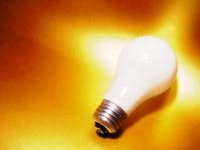Researchers from Washington University in St. Louis have been working on a microbial fuel cell that uses bacteria to treat wastewater and create electricity.
Lars Angenent, Ph.D., assistant professor of chemical engineering, has created a continually fed microbial fuel cell (UMFC). In a paper Angenent published online for the Environmental Science Technology, he describes how wastewater enters from the bottom of a system and is pumped continuously through a cylinder filled with granules of activated carbon. The device also uses chambers that are on top of each other, rather than beside each other.
This is the second design of the UMFC. The improvements Angenent has made by reducing the distance between the cathode and the anode helped reduce power loss due to resistance. The changes also increased the power to ten times more than the previous version. The system can now average 20 watts per cubic meter of sustained power.
Currently, the device is about the size of a thermos, but it will have to be made much larger in order to handle the two million gallons of wastewater necessary to create enough power.
Angenent has filed a provisional US patent on the process. He also received a $40,000 Bear Cub award from Washington University to develop the concept.
Angenent told a Washington University reporter that a bioelectricity generating wastewater treatment system in just one large food-processing plant could power as much as 900 American single-family homes.
A full description of the process and research can be found in the July issue of Environmental Science and Technology. Angenets co-authors are doctoral student Jason He, and Shelley D. Minter, Ph.D., of the Saint Louis University Chemistry Department.
Source: Washington University in St. Louis


